In Dungeons & Dragons, there are thousands of monsters player characters can fight. From typical Humans to mind-bending Elder Brains, you may meet your match against incredible foes or a tiny amoeba; it’s really all up to your skills, build, and a lot of luck.
In the 5th edition, DnD Monsters operate similarly to the 3rd edition. The outsider types from previous editions were separated into celestial and fiend. Vermin and Animals are now classified as beasts, and multiple other 3rd edition monsters were removed entirely. You’ll also find the monstrosity type below. Unfortunately, monster typing in 5e doesn’t play a key role in their abilities or special features, but they can be affected by type-specific moves.
Unless we wanted to make a novel dictating the many intricacies of all the monsters in D&D, you wouldn’t get a complete list of every creature. In this overview, we look at creature types and what they mean. You’ll also learn what creatures you’ll likely run into for each type and a few unlikely specimens you should avoid at all cost, even at higher levels.
Finally, we’ll discuss what abilities they’re likely to have and their alignment, or where they fall on the Good-Neutral-Evil spectrum. While most monsters will be evil and attack on sight, others can be reasoned with a low Charisma roll. In the end, it’s up to you to decide how to handle encounters, and that’s what makes it fun!
The 14 Creature Types of Dungeon and Dragons 5th Edition
The following information comes from multiple sources: the Monster Manual, Volo’s Guide to Monsters, and Mardenkainen’s Tome of Foes/Fiendish Folio Volume 1.
Note: While we will be speaking about D&D 5th edition primarily, we will be pulling some monsters from other editions to explain categories you see elsewhere. We’ll label each edition if it’s anything other than 5th, and we’ll include information on where the rule came from.
Aberration

Aberration is another word for anomaly or something that’s a departure from the norm. While most of the monster types on this list or races in the D&D world aren’t considered “normal” by a human definition, this creature type diverts from the norm more than others.
Aberrations are not of the D&D natural world, but some believe they came from the Far Realm (a plane of madness that diverts away from standard cosmology). However, some aberrations aren’t from the Far Realm, like the Driders, who are a cross between a spider and a drow. They are classified as aberrations because this creature type was transformed, not made.
In D&D lore, aberrations were made sometime between the Spellplague, where magic ceased to function, and the Second Sundering, an event that caused the destruction of the Tablets of Fate. Since the Tables of Fate kept the Realmspace (D&D world) stable, destroying them caused the world to delve into chaos for centuries, hence why aberrations were made.
A person in the Realmspace can recognize an aberration upon sight, as they’ve seen nothing like it. It would be similar for humans on Earth if they saw a Unicorn; we’d know it doesn’t belong. If your character comes across one of the following creatures, be prepared for a fight.
- Mind Flayer: A sadistic Cthulhu-like aberration feared across the multiverse.
- Beholder: Large floating aberrations found in the Underdark.
- Flumph: Mysterious aberrations that resemble squids.
Aberrations are aggressive and will attack on sight with few exceptions. They generally have bizarre anatomies, alien mindsets, strange abilities, and dark vision out to 60 ft. As a group, they don’t exhibit any special immunities or abilities. They are typically evil or neutral creatures.
There are almost 100 aberrations in D&D, making them an uncommon sight.
Beast
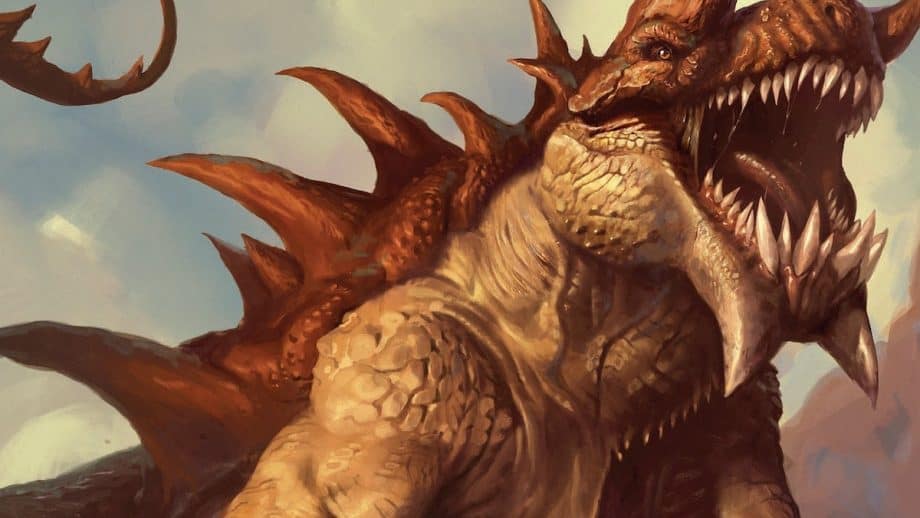
Beast-type monsters are creatures that behave similarly to animals that hang around the Prime Material plane, a mostly empty place. In D&D, an animal can be a beast, but a beast isn’t necessarily an animal. It’s likely that beasts have always existed in the universe.
In D&D 5th edition, all Beasts are under one umbrella, but 4e used more exact classifications. For example, a monster in 4e could have an origin type, general type, and subtype, so you could have a creature that was an Immortal Humanoid Beast Angel. Whereas 3 and 3.5 editions introduced beast types and 4e expanded on them, 5e simplified it significantly.
The simplification made it easier to differentiate between each monster and the strategies you could use to defeat them. As beasts can be any animal-like creature regardless of magic ability, they will have widely different skills, durability, and rarity. Let’s look at a few
- Tressym: A magical beast resembling a small, winged cat.
- Almiraj: A jackalope, or a rabbit with a longhorn.
- Phoenix: A powerful elemental bird with the unpredictable nature of fire.
There are over 200 beasts in Realmspace. The majority of beasts are generally low in intelligence, even if they have magic. If they are of higher intelligence, they won’t be beasts.
Celestial
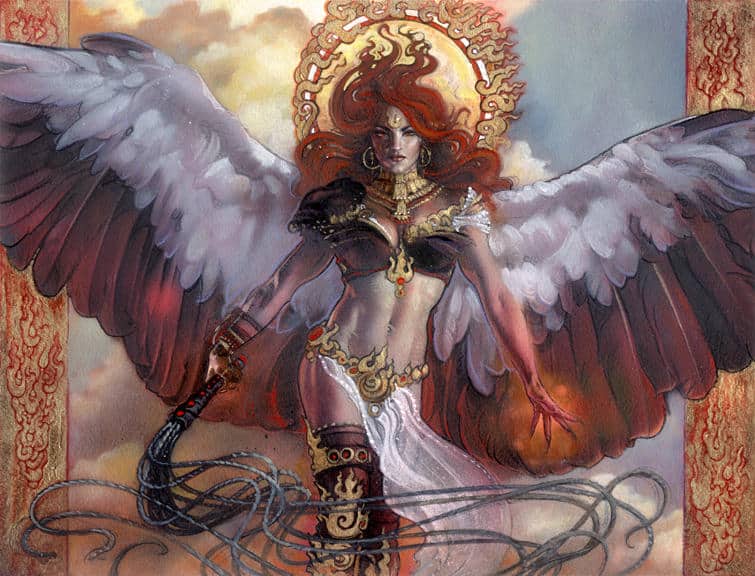
Celestials are creatures of the Upper Plains and often visit the Prime Material Plane, and typically consists of Angels, Archons, Guardians, and Eladrins. Although they have a good alignment, they will attack if they’re threatened or have something to protect.
- Angels: Called assimon, are immortal, winged beasts who serve God.
- Archons: Personifications of the law and good. They hate demons.
- Guardians: Animal-featured guardians are protectors of God.
- Eladrin: A race that’s typically wild, short-tempered, and hates oppressors.
Angel or Celestial was previously a subgroup in both 4th and 3rd editions but was combined into Celestials. All subtypes in all editions are messengers of Gods and love to help others. Besides the subtypes, there are creatures that will attack within the Realm if approached
- Divine Eagle: A large eagle covered in golden feathers.
- Hecate: The Goddess of magic, sorcery, witchcraft, the moon, and necromancy.
- Unicorn: A beautiful one-horned beast that looks like a white horse with a horn.
Celestials are typically strong creatures and consist primarily of Gods and deities. You’re unlikely to make one angry unless you’re Evil. There are over 100 Celestials in the Realm.
Construct
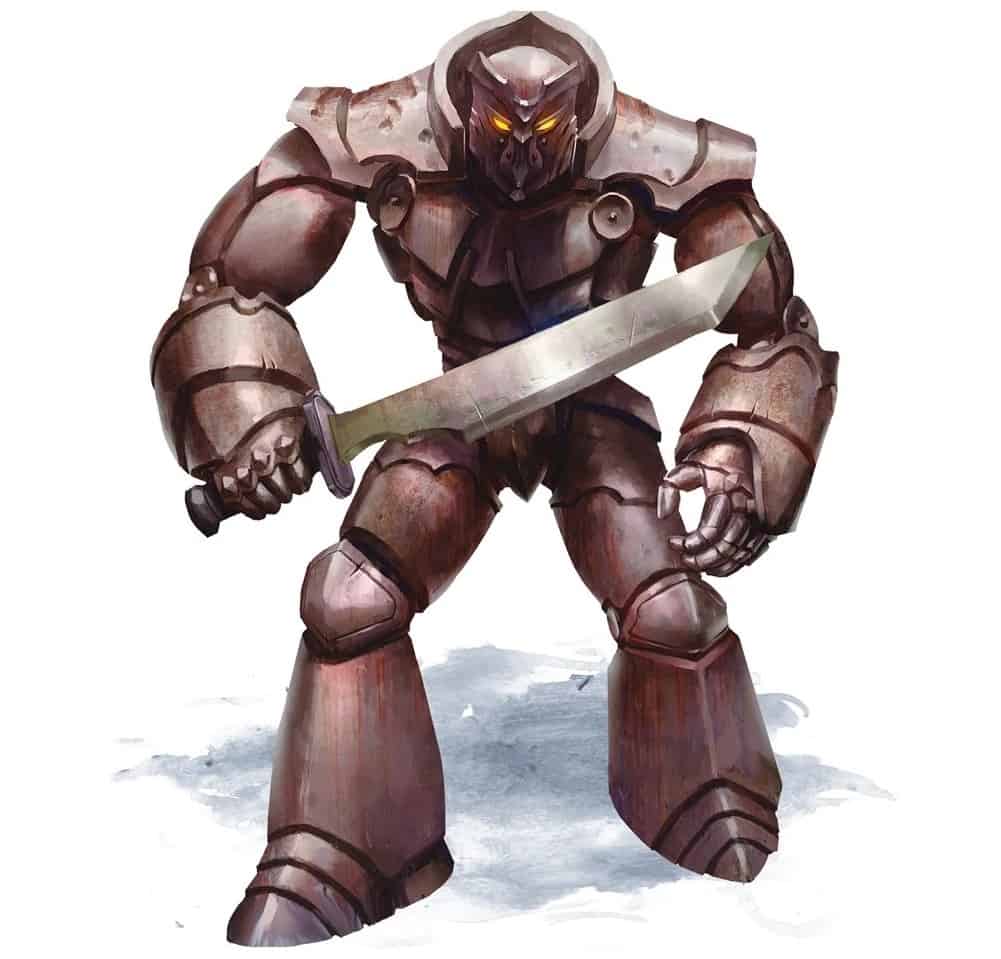
Constructs are inanimate objects that were brought to life by some form of magic, or they were created artificially through sorcery. Most constructs are non-intelligent automatons without a soul and exist only to serve their masters. It’s impossible to talk a Construct down.
Depending on the Construct, they can be tricky to defeat because they are controlled by another magic-user. Attacking a Construct won’t do much, as they feel no pain or remorse and cannot be stopped unless the player characters dismantle them or their master is killed.
Because few constructs are alive, they often possess low-light vision and dark vision, and are immune to sleep spell, poison, stunning, paralysis, disease-related, and death effects. Constructs don’t require food, sleep, or oxygen. They exist for as long as the wielder wants them to.
Although almost any object can be turned into a Construct, you’ll often run into the following.
- Crawling Claw: An amputated hand that can walk with the use of magic.
- Helmed Horror: An animated suit of armor used as a guardian.
- Homunculus: A small, winged Construct that often acts as spies/
Modrons are also Constructs, but they’re also a race of beings. There are over 100 Constructs in D&D, but many of them overlap. For example, there are multiple Clockwork wound creatures.
Dragon
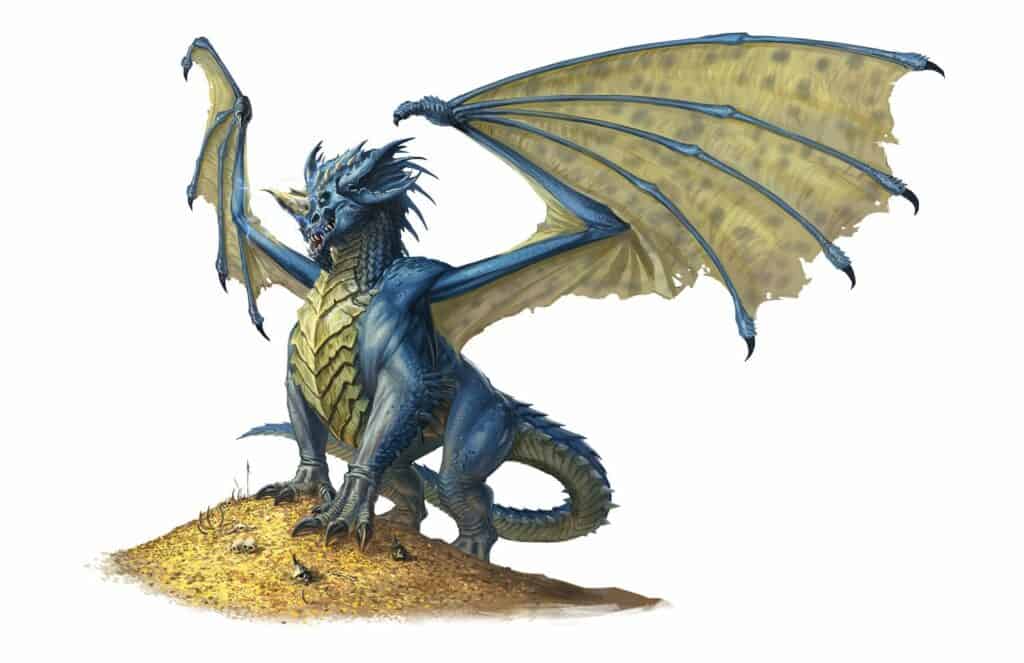
Dragons are the kind of beasts due to their height, strength, intelligence, and magic ability. Most Dragons are large, powerful reptilian creatures, regardless of subtype, but D&D 5th edition classifies its winged beasts into two categories: True Dragons and Lesser Dragons.
See also:
True Dragons

Dragons become more powerful as they age. 5th edition includes five chromatic and five metallic dragons. The Red Dragon, the most powerful of all chromatic Dragons, was entirely based on Smaug from Tolkien’s Story The Hobbit, which was inspired by European Myth.
The following Dragons are included in the D&D 5th edition, none of which are rare.
- Black Dragon: Acid-breathing Dragon that lives in the swamp.
- Blue Dragon: Lightning-breathing Dragon that lives in the desert.
- Green Dragon: Poisonous gas-breathing Dragon that lives in the forest.
- Red Dragon: Fire-breathing Dragon that lives in the mountains.
- White Dragon: Icy-breathing Dragon that lives in the arctic.
Chromatic Dragons are evilly aligned and said to be maids by Tiamat or the Queen/Mother of Dragons. Metallic Dragons are the opposite, are of good alignment, and were said to be made from Bahamut, or the King of Divine Dragons. Below are the included metal dragons:
- Brass Dragon: Lives in the desert and loves to speak to people.
- Bronze Dragon: Lives in the water and has a strong sense of justice.
- Copper Dragon: Lives in the mountains and likes to crack jokes.
- Gold Dragon: Lives in the plains and prefers to teach smaller beings.
- Silver Dragon: Lives in mountains and cities by taking human form.
Metallic Dragons are incredibly kind and will go out of their way to speak to other creatures. You won’t have to run away from these creatures, especially the Silver Dragon, who loves humans.
Lesser Dragons
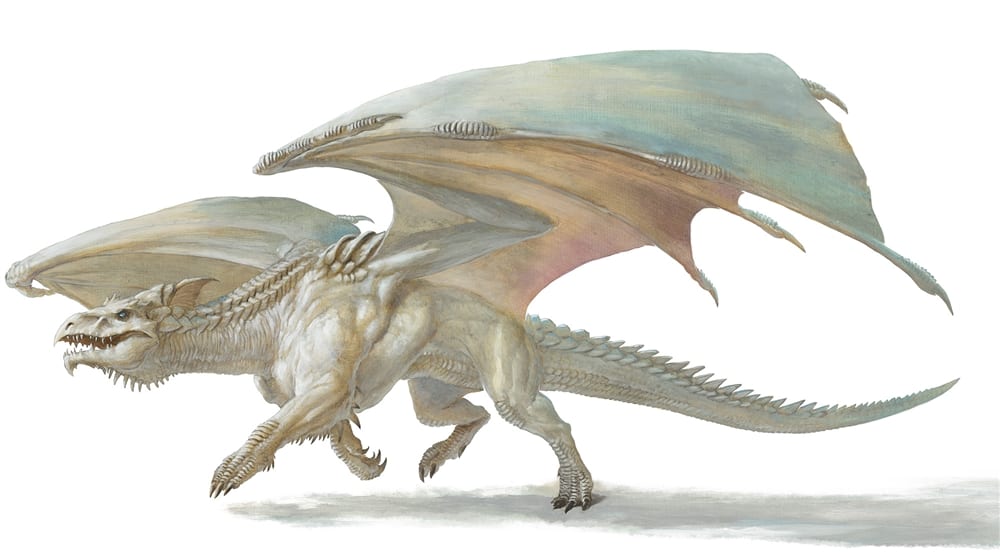
In the Monster Manual, Lesser Dragons are described as less intelligent, powerful, and magical than True Dragons. While they don’t grow more powerful with age, that doesn’t mean they aren’t capable of taking down a True Dragon with a bit of training. You’ll come across the following.
- Dragon Turtles: Massive aquatic creatures that look like Dragons.
- Drakes: The smaller, less powerful cousin of a True Dragon.
- Pseudodragon: Tiny Dragons that are valued as wizard’s familiars.
Other editions include Natural, Gem, Ferrous, Planar, Lung, Arcane, Unique, and Rare Dragons that aren’t in D&D 5th edition. In fact, 5e has an astonishing lack of Dragons.
Elemental
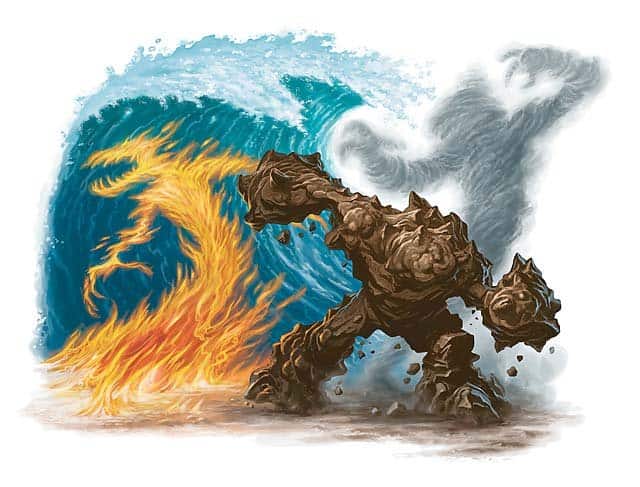
An Elemental is a creature that exists as the purest form of the basic elements: earth, air, water, and fire. There are several other elements an Elemental can be, but they’re less common. Elementals are self-aware and intelligent entities and were made up of matter from their land.
Player characters can summon Elementals, but if they are from their plane of concordance, they become too strong to wield. For example, if a Wizard summons a fire elemental in an Elemental Plane of Water, they could die. Although intelligent, they are often used as servants, but to even make them serve you; you’d have to have an immense amount of personal power.
Monsters that are classified as Elementals don’t have to take the direct form of the living element. Genies are from the Elemental Planes but can look like different creatures. The Dao genie is an Earth-based Elemental that looks similar to a Gorgan or a Hindu Goddess.
- Gargoyle: A vicious predator imbued with pure magic.
- Invisible Stalker: An air Elemental that suffocates its victims.
- Mephit: Imps that can be of any Element.
There are nearly 200 Elementals in the Realm, most of which are Neutral or Evil.
Fey

Feys are creatures from the Feywild, also known as the Plane of Faerie. Many have supernatural abilities and a deep connection with nature. They are closely tied to the forces of nature and can be found in misty forests and twilight groves. Many legends surround them.
Faeries were seen as good beings from friendly lands in Toril, which used to be a happy place but is struggling in its current lore. On the other hand, Fey are also seen as an awful race that devours children and guts the innocent. To foreigners, they may be mistaken for gnomes.
All of these rumors were true, as Fey can either be of good or evil alignment. Many Faeries will trick travelers into thinking they’re good; they are unconcerned with the goings-on in the world and will often betray others to protect their own kind, not at all dissimilar to Humans. It’s thought that the leShay (3e) was one of the creator races that gave birth to the Fey.
Similar to Earth mythology, Fey can be warded off with iron, the color red, and running water.
There are many different kinds of Fey in D&D, but there are common threads that make them Faeries. Some are bound by natural locations, like water, landmarks, and geographical features (dryads, nereid), while others are born from emotions (meenlocks and redcaps). Another group was identified as hags (Sea Hag, Bheur Hag) and some are even misclassified as Sprites.
- Pixie: A race of mischievous Sprites that enjoy playing pranks on people.
- Korred: Also called the Dancing Folk, they are carefree and boisterous.
- Mite: While they look similar to gremlins, they are curious and violent Fey.
Some Fey are often misclassified because they either come from the Feywild or have Faerie-like qualities. For example, the Faerie Dragon are small Dragons, while a Kelpie is a horse-like Plant creature that wanders marshes. There are over 100 Fey in the Realm.
Fiend
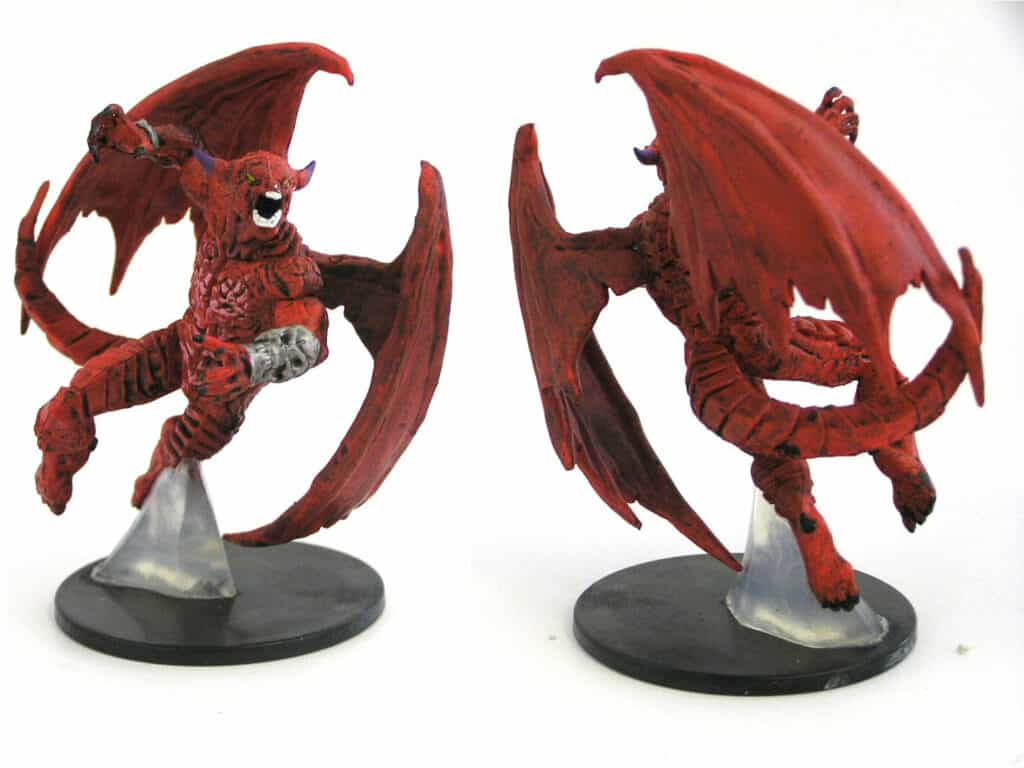
A Fiend is a catch-all term for evil creatures that come from the Fiendish Planes, but they also arrive from the Lower planes and a section of the cosmological models. Fiends are born evil and rarely if ever, have good alignments. Malevolence is in their long-lived natures.
Every Fiend has a “true name,” which can be used against them. Once a non-chaotic spellcaster becomes aware of this name (by casting True Name, Ensnarement, or other magics), they can control the Fiend instantly. An evil sorcerer could work together with a Fiend to learn other enemies’ true names to continuously control them, thus helping the first Fiend.
However, if the Fiend knows their true name and tells no one, they rise up in the ranks themselves. If they have this power, they typically change into stronger beings and are able to use Mortals after death. Mortals can be turned into Fiends once exposed to temptations, like food or money, but faith is usually the strongest magnet and the hardest to break.
You’ll come across many regular Fiends on your journey.
- Hello Hound: A ferocious pack hunter that attacks on sight.
- Nightmare: A hell hound with a fiery mane.
- Howler: A predator with a mind-shattering howl.
The most important event in Fiend history is the Blood War, which was an interplanar battle between demons and devils. 5th edition contains those fiends but also includes Yugoloths.
Demons
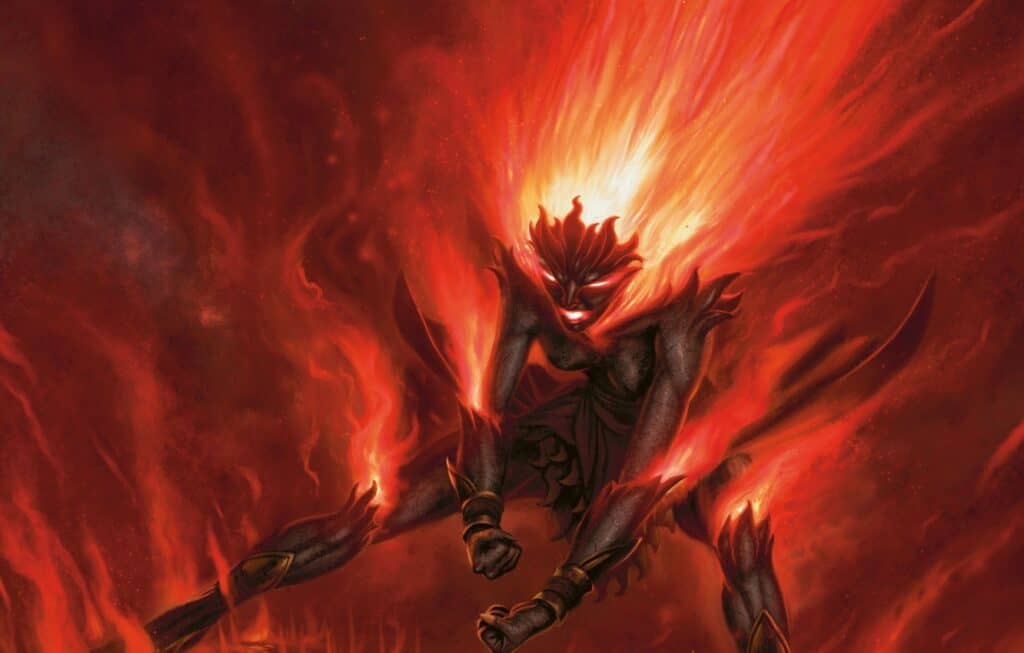
The most widespread race of fiends, they are native to the Abyss and are chaotic evil. Tanar’ri, obyriths, and loumara are the primary three races, but there are many sub-races.
- Nabassu: Death stealers who are aggressive and eternally hungry for souls.
- Sibriex: An ancient Demon that’s capable of manipulating flesh.
- Vrock: A Demon with the taste for human flesh and carnage.
Demons aren’t interested in making friends and are incredibly aggressive. They have no Gods or rulers and are the sworn enemies of Devils. They are agents of chaos.
Devils
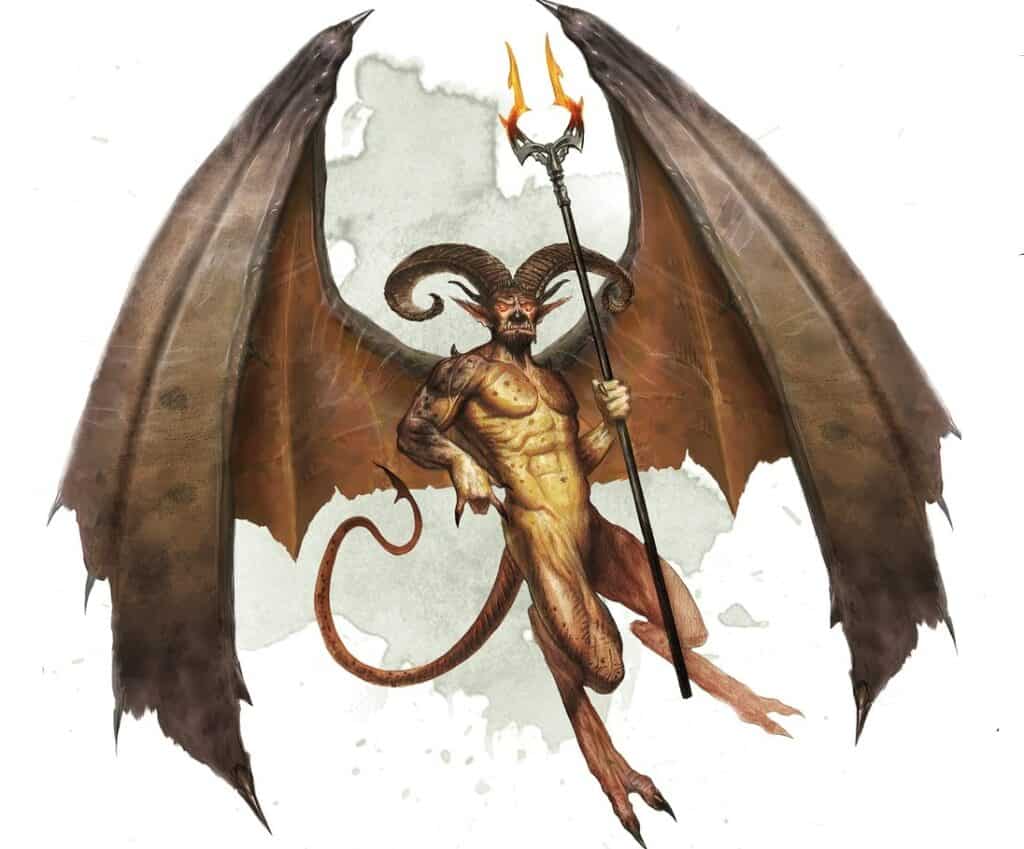
Devils come from the Nine Hells of Baator and are incredibly terrifying and calculating. They are lawful evil, vicious, and will kill anyone for no reason. The Baatezu are the most dominant.
- Merregon: Legion devils that were used as foot soldiers in the legion of the Nine Hells.
- Nupperibo: Spawned from the souls of the incompetent, they blindly follow orders.
- Succubus: A shapeshifting demon, their beauty entices their prey.
Devils have their own distinct hierarchy, society, an economy that is often compared to the war-like Drow. Devils must fight their way to the top for respect, land, and the right to breed.
Yugoloths

The neutrally evil Yugoloths are manipulative creatures that hail from the Blood Rift. They often make their living as mercenaries or paid assassins. They’ll take advantage of any situation.
- Canoloth: Loyal hounds of the Yugoloth who are valued as pets.
- Nycaloth: Ait cavalry in the Yugoloth armies. They are powerful and scheming.
- Ultroloth: The enigmatic rules of the Yugoloth, they are fearsome.
Demondands, Archfields, Half-Fiends, and Rare Fiends are present in other editions (3e, 4e) and are scary in any incarnation. There are almost 200 types of Fiends in the Realm.
Giant
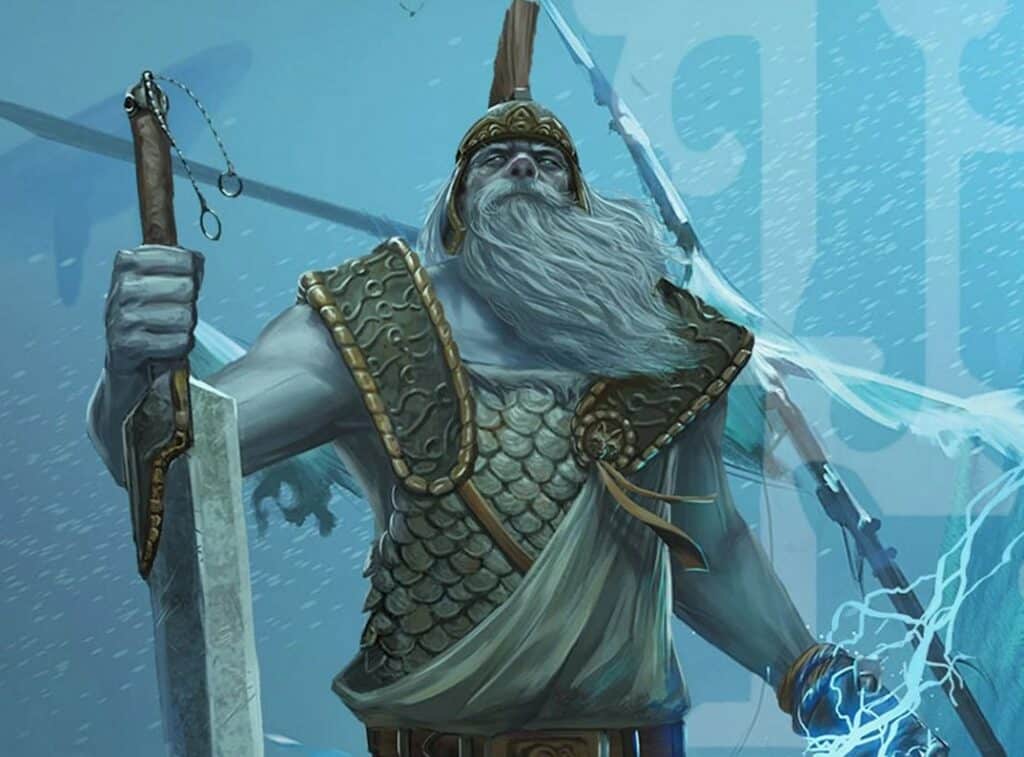
Giants are human-like creatures that are exceptionally large in size. They inhabited the Abeir-Toril with other human-like races but soon went to war with Dragons. This conflict lasted thousands of years, which neither race actually won, which made the conflict pointless.
Like most creatures, Giants have a different option on what’s good and evil. Giants consider an act “good” if it honors the giant’s family or deity, and an “evil” deep is an act of cowardice, stealing, or betraying their family or deity. Their idea of good and evil is integral to their race.
In D&D 5th edition (and most other editions), Giants are classified as True Giants or Giant-kin.
True Giants

True Giants are related to natural features in the world, such as clouds, fire, frost, hills, stone, and other natural phenomena. They can be brutal, but even kind Giants care little for small folk.
- Cloud Giant: A race of Giants that likes to live among the clouds.
- Fire Giants: Master craftsmen who live near mountains and volcanoes.
- Storm Giant: The most intelligent and respected race of Giants.
True Giants are fewer than Giant-kin and are often much stronger, deadlier foes.
Recommended read: Giant Eagle 5e Guide, Giant Ape 5e Guide.
Giant-Kin
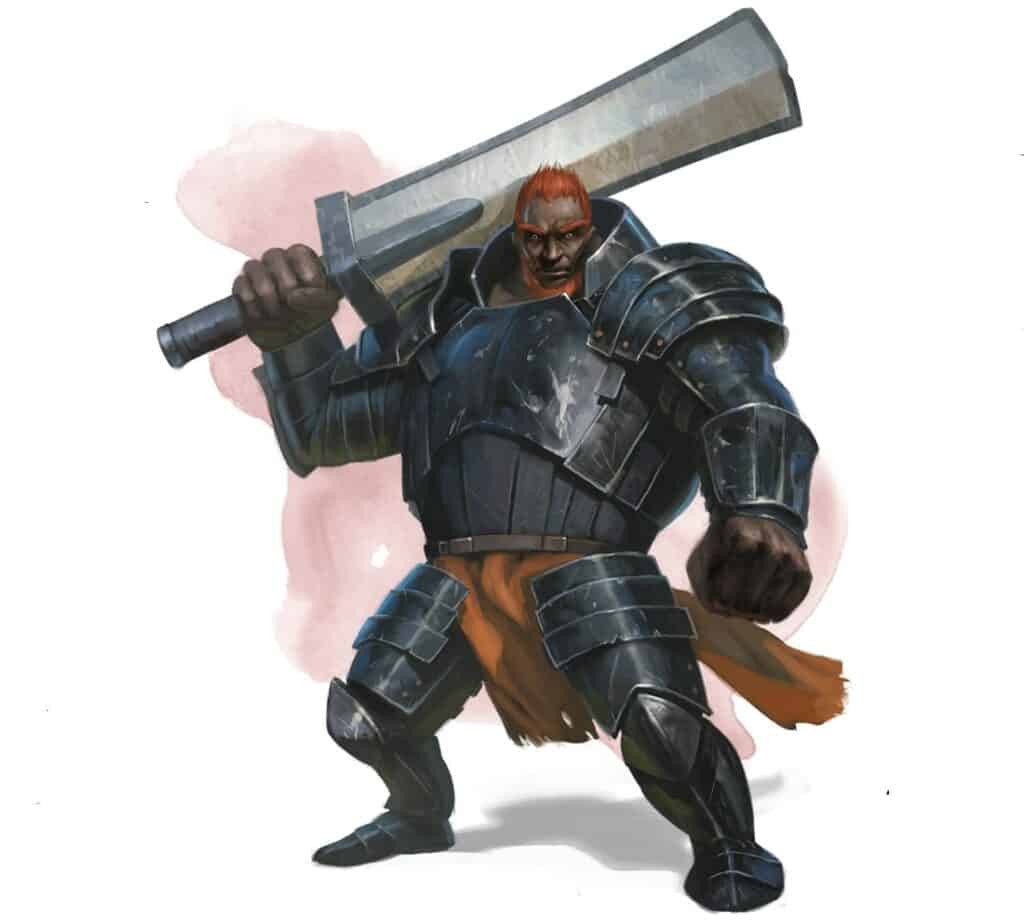
Giant-kin are large humanoids that are related to true giants. Their lineage dates back to Othea’s relationship with Ulutiu, who together produced smaller Giants. All Giant-kin are considered an act of evil, as they were born out of wedlock and are “lesser” beings.
- Firbolg: Shy Giant-kin who avoid contact with other races but are very intelligent.
- Verbeeg: Known as human behemoths, they resemble strong humans
- Fomorian: Hideously deformed by an ancient curse, they are very wicked.
Ogres and Cyclops are also considered Giant-kin, though it’s unknown whether or not they were born from one of Othea’s affairs. There are nearly 100 Giants within D&D.
Continue reading related Giant DnD Guides:
Humanoid

Humanoids are the prominent people of most worlds, typically walk on two legs. All Humanoids have a distinct culture, and some have magic abilities. There are an enormous amount of Humanoids that the player can take control of or customize to make them less powerful and controllable.
There are numerous humanoid societies, mainly composed of Humans, Halflings, Elves, and Dwarves, which can be any alignment. There are also evil bipedal creatures, like goblinoids, kobolds, orcs, and lizardfolk. Many races mix with each other, like the human and orc.
Let’s take a look at some of the most common bipedal races in the Realm.
Humans

Widespread, they are found in most religions and are classified as disagreeable and fierce. Their lack of structures and goals make them look like children to other races, but their short lives and curiosity have made them revered at the same time.
There are many subspecies of humans, but the Faerûn, Kara-Tur, and the Maztica are common.
- Captain Othelstan: A strong member of the Cult of Dragons.
- Doom Raiders: An adventuring party that cleans out lairs of liches.
- Frulam Mondath: A right-ranking member of a cultish army.
Humans are the most versatile of races and can breed with various humanoid races.
Elves
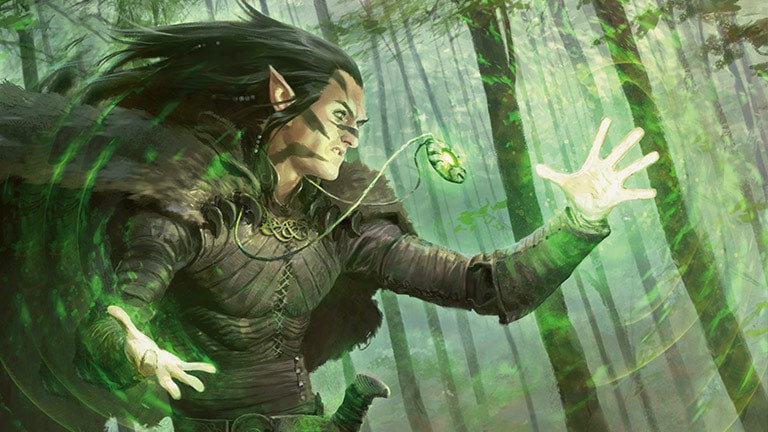
Elves prefer to live in the wilderness surrounded by nature. They worship Gods of the Seldarine, which is the elven pantheon of Gods. They are a long-lived, strong nation that is often good (except for the Drow). The most common subraces are the High Elves and Elves.
- Drow: A race of dark-skinned elves that live in the Underdark.
- Neronvain: A Green Wyrmspeaker who attacked the Misty Forest.
- Nezznar the Black Spider: A powerful Drow Wizard.
Drow are the most common Elf enemy, as they are typically or evil alignment.
Dwarves
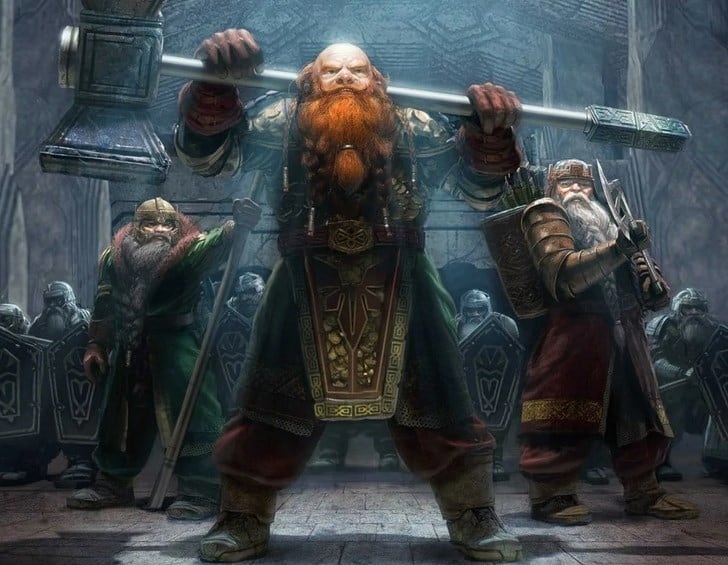
Often called Stout Folk, these tough and tradition-abiding humanoids are known for their beautiful craftsmanship and strong martial traditions. They value their ties to their work and family as absolute. Common sub-races include the Arctic, and Gray Dwarves, and the Urdunnir.
- Duergar: Grey dwarves that are a cruel and evil subrace of Dwarves.
- Chultan Dwarves: Albino Dwarves that live in the mines of Chult.
- Noska Ur’gray: An enforcer of the Xanthar’s Thieves Guild.
Dwarven enemies are typically Grey Dwarves, but they can be from any sub-race.
Players can also take control of Dragonborn’s, Gnomes, Half-Elves, Halflings, Half-Orc, and Tieflings from the original Player’s Handbook. However, the newer handbooks let you control 40+ more races and creature types. There are thousands of Humanoid subtypes in the Realm.
Monstrosity

Monstrosities are unnatural creatures from multiple places of origin, including magical experimentation and curse. It’s a “catch-all” type for monsters that don’t fit into any category, and they may resemble humanoids or beasts. Monstrosities are usually classified as such:
- If the creature is bipedal but doesn’t have a culture or is considered feral, it’s a monstrosity. Bipedals, like Chitine, have 4 arms but walk on two legs.
- If the creature is quadrupedal but isn’t a beast from the natural realm or isn’t of high enough intelligence to be a Dragon or another quadrupedal, it’s a monstrosity.
Some monstrosities, like the Mimic, don’t fit into any category at all. While it is a shapechanger and is technically a Construct, it wasn’t changed by another being. Therefore, Mimics fit in as a Monstrosity because they are both monstrous, alive, and capable of some degree of thought.
Monstrosities range in size and can be as impressive as a Kraken or as small as a Zorbo.
- Doppelganger: Shapeshifting monsters who take the form of humanoids.
- Astral Dreadnought: Massive creatures with sharp teeth and claws.
- Tarrasque: A 70 feet tall beast that sleeps within the world’s core.
You can find Monstrosities in virtually every plane of existence within the Realm.
Related reads:
Ooze
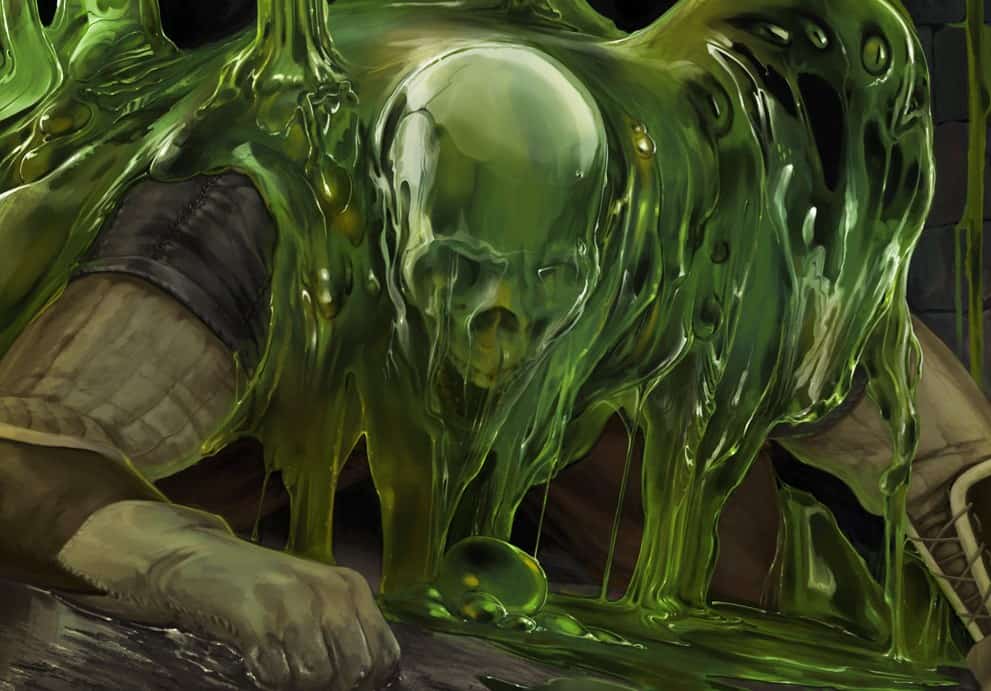
Oozes are creatures without a shape and are often gelatinous. They are primarily found underground or in some type of dungeon, away from light and other predators. Oozes are essentially blind, but they do have blindsight, which lets them discern nearby objects from creators. They secrete acid from their skin, which can dissolve materials and flesh rapidly. Avoid close-range combat when possible.
Oozes don’t come in many forms, but they can be tricky to damage. They are unaligned and not concerned with the lives of other beings but will consume them if they’re nearby.
- White Maw: An Ooze that ingests creatures and communicates telepathically.
- Ochre Jelly: A dangerous variety of Ooze that’s favored by Ghaunadaur, a Drow deity.
- Gelatinous Cube: A mindless creature that takes the shape of a cube.
Although they can be difficult to fight, you’re unlikely to run into them in well-lit places. There are less than 30 Ooze creatures, making them one of the rarest creature types.
Plant

All plant creatures are made from vegetable matter and are often fungal creatures that don’t need to sleep but can be put to sleep with magic. The Plant creature type combined multiple other types, including Myconids, Fungi, and Kelpies. Specific types may have a lot of lore, but the general Plant type isn’t connected in any way other than the fact they’re made from plants.
There are a few notable Plants you can fight in the Realm, but most of them are unintelligent.
- Basida: a Myconid leader of the Neverlight Grove.
- Treants: Awakened trees that are energetic and rebellious
- Shambling Mound: A large, animated plant that’s vaguely man-shaped.
Plants can be scary to fight because they may look like normal shrubbery or trees at first, so sneak attacks are likely. Plants take up only 10% of the Monster roaster with only 50+ creatures.
Here’s everything you need to know about Plant Monsters in 5e.
Undead
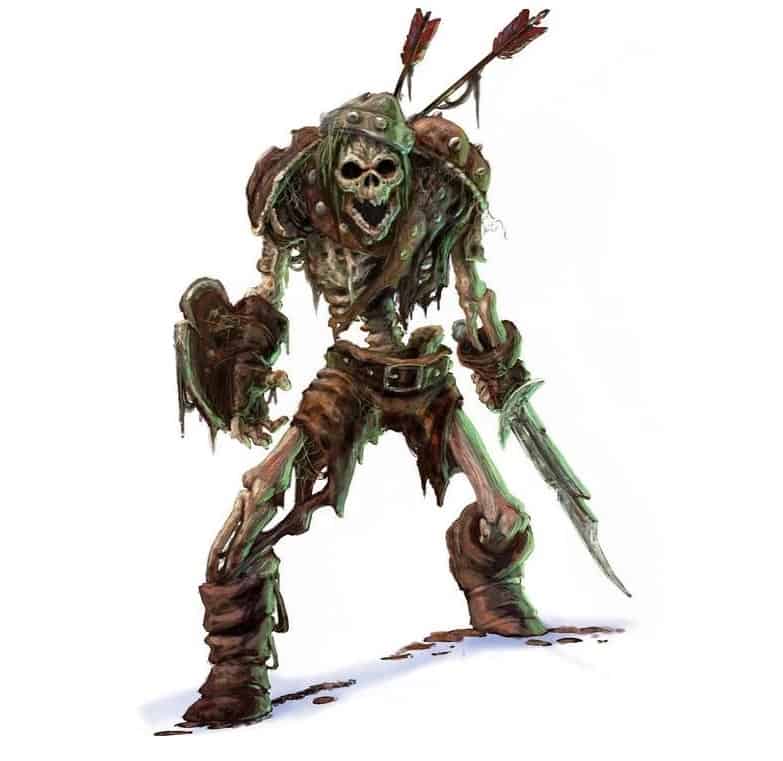
Undead creatures account for almost all reanimated corpses of other creature types. They are typically animated by supernatural or spiritual forces, and it’s common for deities to use the undead as servants. The dwarven God Dumathoin is an example of a necromancer God.
Once animated, they are incredibly resilient and are resistant to numerous effects, including mind-altering effects, sleep, poison, disease, stunning, paralysis, and death. It’s impossible to drain their life force. Skeletons, Liches, and Ghouls are common undead creatures.
- Vampires: Undead that feed off of the blood from other creatures.
- Wight: An undead creature that can drain life energy by touching its victims.
- Ghost: Souls of the deceased that haunt specific objects, areas, or creatures.
There are thousands of examples of undead foes, as most creatures can be reanimated.
Frequently Asked Questions (FAQ)
Question: What is the strongest monster in D&D
Answer: Strong monsters are classified as creatures of a challenge level of 10 or higher. Out of all monsters, the Tarrasque is the most feared in the Realm. Their combat ability is like none other, and taking one down is a crowning achievement for most players. Other strong creatures include the Prismatic Dragon, Avangion, Hecatoncheires, and the Elder Titan.
Question: How many different monsters are in D&D?
Answer: There are thousands of different monsters in D&D. In D&D’s 5th edition, there are 14 different monster types: Aberration, Beast, Celestial, Construct, Dragon, Elemental, Fey, Fiend, Giant, Humanoid, Monstrosity, Ooze, Plant, and Undead. Humanoids are plentiful, followed by Fiends. Ooze and Plant creatures are the rarest, and Undead creatures can be of any type.
Question: What is a “Tag” in D&D?
Answer: A “Tag” is a subtype in D&D. For example, a Humanoid can also be a Shapeshifter, an Orc, a half-elf, and so on. Most subtypes can be from other main types or explicitly created to give more information about a creature. However, in the 5th edition, the Undead creature type isn’t added on to another creature type. If they’re reanimated, they simply become Undead.
Conclusion
D&D 5th edition attempted to simplify the Monster classification system by putting every baddie into 14 categories, which definitely benefits the player and DM. However, some people aren’t fond of the change, as it makes it more challenging to fight certain creatures. Since 3e removed the creature-specific skills, you’ll need to examine each Monster carefully before fighting it.
Have fun tackling Monster in the newest edition of Dungeons and Dragons!
Continue reading related 5e Monster Guides:
- Dire Wolf 5e Guide
- Zombies 5e Guide
- Pit Fiend 5e Guide
- Nightwalker 5e Guide
- Flesh Golem Guide
- Manticore 5e Guide
- Intellect Devourer 5e Guide
- Blight 5e Guide
- Roc 5e Guide
